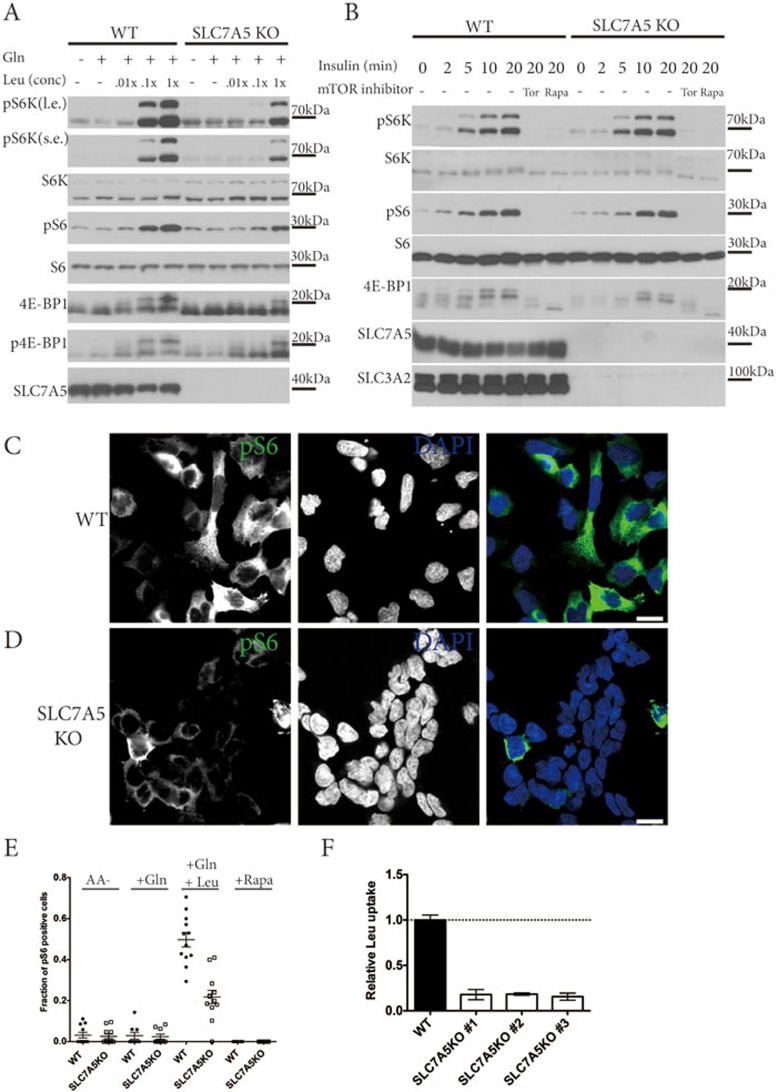Figure 3.
SLC7A5 is required for AA signaling to mTORC1. (A) SLC7A5 is involved in Gln/Leu-induced mTORC1 activation. Wild-type and SLC7A5 knockout (KO) 293A cells were AA starved for 6 h and Gln stimulated for 30 min followed by 10 min of Leu stimulation at different concentrations. SLC7A5-deficient cells, which are confirmed by the lack of SLC7A5 expression, are impaired in mTORC1 activation at low Leu concentrations. Similar results were observed in an additional cell line independently generated (data not shown). (B) SLC7A5 does not affect insulin-induced mTORC1 activation. Experiments were similar to A except that cells were serum starved and stimulated with 100 nM insulin for the times illustrated, with or without 1 h pretreatment of mTOR inhibitors Torin (Tor) or Rapamycin (Rapa). Note also the lack of SLC3A2 expression in SLC7A5 KO cells. Similar results were observed in an additional cell line independently generated with a separate sgRNA targeting SLC7A5 (data not shown). (C) Representative confocal image of Gln/Leu-stimulated 293A WT cells, labeled for pS6 and stained for DAPI. Scale bar, 20 μm. (D) Confocal image of Gln/Leu-stimulated SLC7A5 KO 293A cells, labeled for pS6 and stained for DAPI. Samples and images in C and D were processed in parallel and acquired with the same microscope settings. Scale bar, 20 μm. (E) Leucine-induced mTORC1 activation is diminished in SLC7A5 KO cells. Quantification of confocal images as in C and D, and plotted as fraction of pS6-positive cells per image. The treatments were AA starved, AA starved then 1× Gln stimulated, or Gln/Leu stimulated, or pretreated with rapamycin for 1 h and then stimulated with Gln/Leu. (F) SLC7A5 is essential for efficient leucine uptake. H3-leucine uptake assay was carried out for three independently generated SLC7A5 KO clones and normalized to WT. Error bars are means ± SEM of triplicates from a representative experiment.

